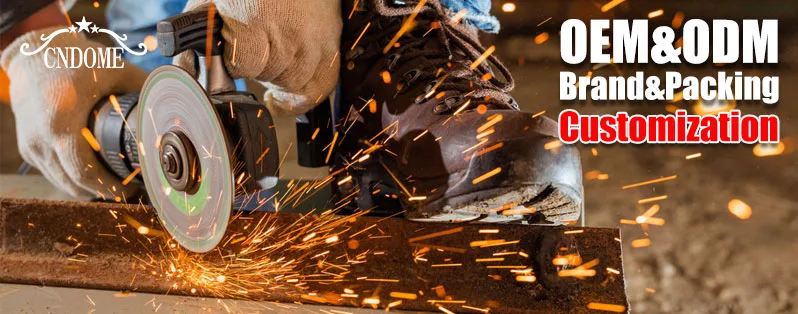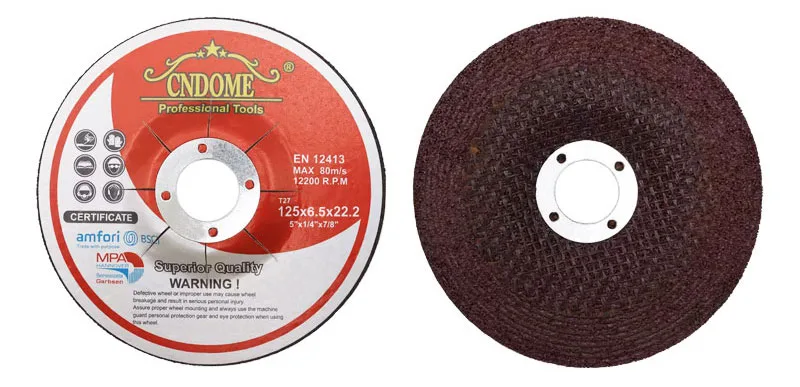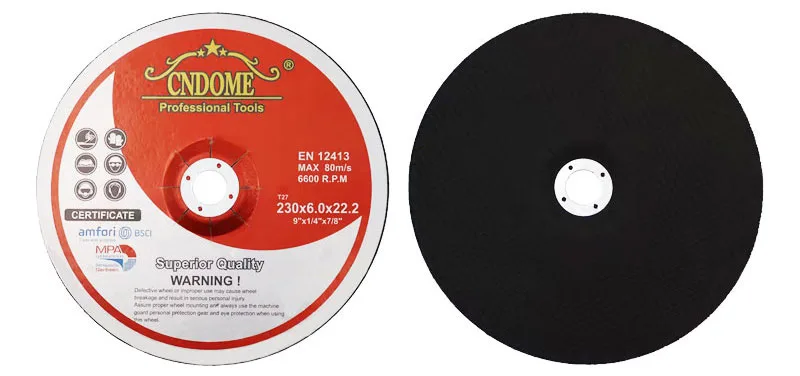Grinding wheels play a crucial role in various industries, from metalworking to woodworking. Understanding grinding wheel specifications is essential for achieving optimal results in your projects. In this blog, we’ll delve into the key aspects of grinding wheel specifications, demystifying the codes and numbers that define their capabilities.
Abrasive Material (Type):
The first element in a grinding wheel specification is the abrasive material. Common types include aluminum oxide (A), silicon carbide (C), and diamond (D). Each material has unique properties, making it suitable for specific applications. For example, aluminum oxide is versatile and widely used, while silicon carbide excels in grinding non-ferrous metals.
Grit Size:
Grit size refers to the size of the abrasive particles in the grinding wheel. It is denoted by a number, such as 36, 60, or 120. Lower grit numbers indicate coarser abrasives suitable for material removal, while higher grit numbers result in finer finishes. Understanding the project requirements helps in selecting the appropriate grit size for your grinding wheel.
Wheel Grade:
Wheel grade signifies the hardness of the grinding wheel. Codes like A, B, or C are used to classify the grade. Softer grades (A and B) are suitable for materials that are easy to grind, while harder grades (C and above) are ideal for more challenging materials. Choosing the right grade prevents premature wear and ensures consistent performance.
Structure:
The structure of a grinding wheel refers to the spacing between the abrasive grains. Open structures (porous) are suitable for cooler cutting and are ideal for softer materials, while dense structures (closed) are better for harder materials requiring more support. Understanding the structure is crucial for optimizing the grinding process.
Bond Type:
The bond in a grinding wheel holds the abrasive grains together. Common bond types include vitrified, resinoid, and metal. Each type has its unique characteristics, affecting the wheel’s performance. For example, vitrified bonds are excellent for precision grinding, while resinoid bonds offer flexibility.
Wheel Shape and Size:
Grinding wheels come in various shapes and sizes, from straight wheels to tapered and cylindrical ones. The specifications also include the diameter, thickness, and hole size of the wheel. Matching the wheel shape and size to the job requirements ensures efficiency and safety.
Conclusion:
Understanding grinding wheel specifications is a fundamental step in achieving optimal results in your projects. Whether you’re working with metals, ceramics, or other materials, selecting the right grinding wheel involves considering abrasive material, grit size, wheel grade, structure, bond type, and wheel shape and size. By decoding these specifications, you can enhance precision, efficiency, and the overall success of your grinding operations.



